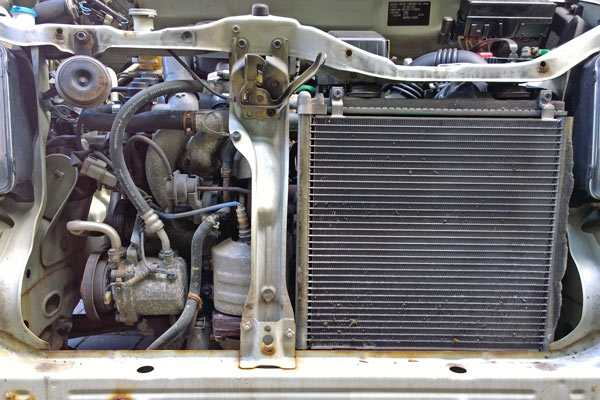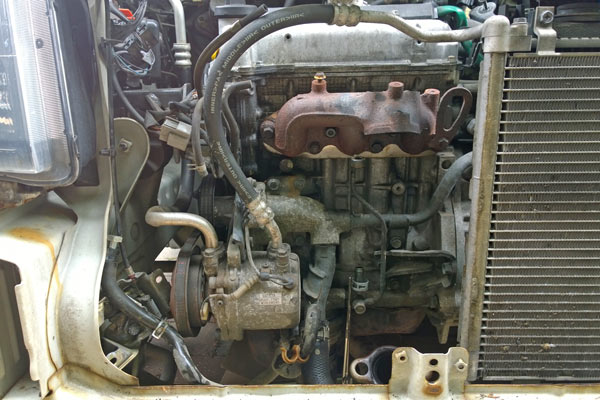We’ve been here before with the JDMny but this time it wasn’t the lack of boost that was the tell tale sign so much as the screeching metal-on-metal sound coming from under the Wagon’s bonnet…
With 50,000 miles on the clock the Wagon R’s original turbo was probably nearing the end of its expected lifespan – the JDMny got its third turbo at just over 100,000 miles – so it’s not a complete surprise that a 2 hour motorway journey on a hot day would push things a little too far. Overly-loud wooshing noises and the odd reluctance to build boost morphed into a complete loss of boost pressure and a very noticeable metallic squeal when accelerating. Thanks to the recently installed R-VIT it was possible to check the car’s vital signs – all healthy except for the boost – and be reassured that coasting along to the next exit from the motorway was not going to harm it further.
All the symptoms were pointing to a major turbo failure and so before the old turbo had even been removed a replacement was winging its way to me via Jesse Streeter – a bit of a gamble but one that kept things moving whilst the longwinded job of extracting the turbo got underway. Being a transverse engine configuration the engine bay is much more tightly packaged than the JDMny’s but thankfully the radiator and air conditioning condenser are offset to one side, allowing access to the exhaust system almost as soon as the front bumper had been removed.

Unfortunately it was one thing being able to see the turbo and another thing being able to get it out. A number of other major components had to be removed in order to open up some space, including the front vertical brace, the intercooler, the airbox and intake, the radiator fan and shroud, and various water pipes and heat shields had to be moved out of the way too. As with the JDMny’s turbo replacement it turned out to be easier to unbolt the main exhaust pipe from the catalytic converter and bring the turbo, collector and cat out in one piece – for the Wagon this even included leaving the intake pipe bolted on, such was the lack of space to remove it in situ!

With the turbo on the bench and free of ancillaries it was clear that the compressor wheel had been chomping its way into the inlet housing, destroying the blade tips and creating that death squeal in the process. Thrust bearing failures allow the compressor wheel to pull itself into the inlet housing under load and cause this kind of damage but whatever the cause this much main shaft wobble is never a good thing…

Reassembly was as fiddly as removal but, as the turbo was a like-for-like swap, there were no issues other than the odd furrowed brow and scraped knuckle. With new oil and coolant the Wagon is back to full health and running well – here’s to another trouble-free 50,000 miles!